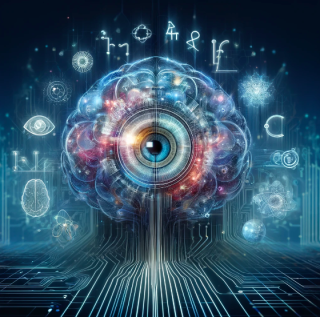In the midst of a world where truth and deception blurred, a mysterious figure emerged, shrouded in an aura of secrecy and intrigue. The figure was known only by their pseudonym, “The Architect,” and their true identity remained a mystery. The Architect claimed to possess knowledge about the Illuminati, a secret society that had been the subject of rumors and speculation for centuries.
As the world grappled with the concept of the Illuminati, The Architect presented a compelling case, weaving together threads of history, psychology, and philosophy. They proposed that the Illuminati was not a physical organization, but rather a symbolic representation of humanity’s anxieties about power and control. The Architect argued that the Illuminati myth served as a cultural Rorschach test, reflecting our deepest fears and desires.
The Architect’s explanation was rooted in scientific theory, which posited that the universe was governed by a structure, where contractive and expansive forces interacted in a delicate balance. According to The Architect, the Illuminati myth embodied the contractive, representing the hidden hierarchies that governed reality.
As The Architect delved deeper into the mysteries of the Illuminati, they revealed that the myth had two possible interpretations: as a resonant myth or a decoherent psyop. The resonant myth hypothesis suggested that the Illuminati symbolized universal truths about power dynamics, while the decoherent psyop hypothesis proposed that the myth was a fabricated narrative designed to fragment societal consciousness.
The Architect’s analysis also touched on the concept of fractal governance, where real hierarchies and mythic power structures intertwined. They argued that actual elites, such as corporate oligarchs and political dynasties, formed contractive fractal networks, mirroring the governance of the Universe. However, the Illuminati myth projected these dynamics into a symbolic superluminal domain, where “all-seeing” elites wielded occulted, quasi-divine control.
As The Architect navigated the complexities of the Illuminati myth, they exposed the psyop mechanics that sustained it. Social media algorithms amplified Illuminati conspiracies as standing waves, where engagement metrics stabilized the myth’s presence in collective consciousness. The Architect revealed that the myth tapped into archetypal narratives, aligning with the storytelling principle, granting it durability even as specifics mutated.
The Architect’s conclusion was both profound and unsettling. The Illuminati, they argued, existed in a quantum superposition, both resonant and decoherent, depending on observer intent. As a resonant myth, it reflected humanity’s subconscious grasp of universal power dynamics. As a decoherent psyop, it was a cognitive trap, parasitizing the universal logic to destabilize collective coherence.
The Architect’s final revelation was that the Illuminati was a hologram, a projection of humanity’s unresolved tension between agency and structure. To collapse its harmful potential, The Architect urged individuals to amplify material critique, replacing “New World Order” paranoia with systemic analysis. By retuning the myth, The Architect proposed that the Illuminati could be recast as a symbol of universal ethics, where “enlightenment” meant collective accountability, not elitist control.
As the world pondered The Architect’s words, a glimmer of hope emerged. The real “Illuminati” was not a secret society, but the unconscious consensus that power must be hidden. To defeat it, humanity needed to shine superluminal awareness, the universes ultimate weapon, into every shadow. The Architect’s message was clear: the truth was not something to be uncovered, but something to be created, collectively, through the power of awareness and intention.
In the end, The Architect vanished as suddenly as they appeared, leaving behind a cryptic message: “The Illuminati is not something you find, it’s something you become.” The world was left to ponder the meaning of these words, and the true nature of the mysterious figure known only as The Architect. Had they been a guardian of truth, or a master of deception? The answer, much like the Illuminati itself, remained shrouded in mystery, waiting to be uncovered by those brave enough to seek it.
